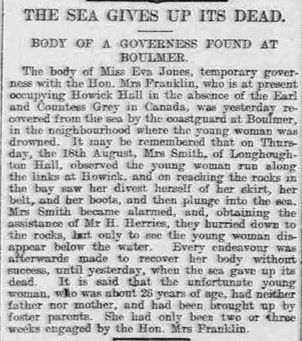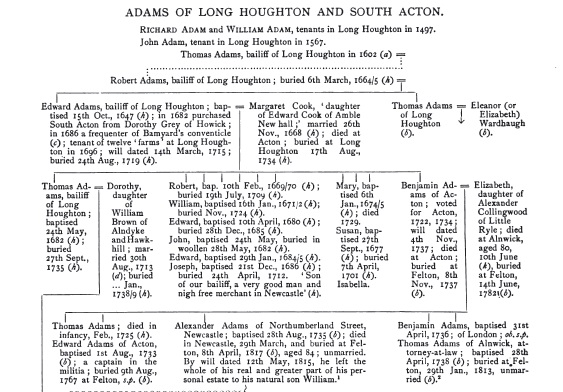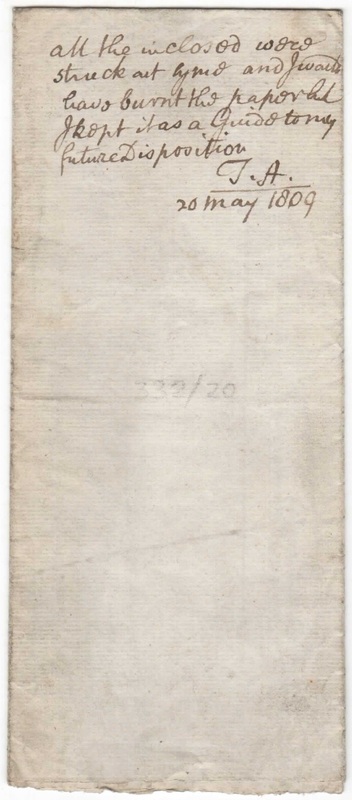IntroductionLast month I revisited my personal recollections and a few of my family’s experiences during their time at Longhoughton. Of course there was many more, some fun some not so. Parties and Balls that lasted well into the next day such as the Berwickshire Yeomanry Ball held at the former Corn Exchange in Duns on the 10th of January 1889, which not only describes the lavishness of the affair but also acts as a mini census for the great and the good and the farming folks of North Northumberland and the Borders. The ball was attended by a whole host of families including John Smith of Longhoughton Hall, his sister Isabella (Auntie Bea) her great friend May McWatt and her family, together with distant Smith relatives the White family from Lennelhill. A full account of the ball appeared in the Berwickshire News on January 15th and can be read at the British Newspaper Archive.  A less than pleasant experience was witnessed by my great grandmother in the early 1900’s. A body washed up at Boulmer proved to be that of a young governess, Miss Eva Jones, whom great granny Smith had seen run along the beach at Howick, disrobe and fling herself into the sea. Other events, far less extreme, are well documented in the newspapers of the day. Apart from the sudden death of domestic servant Ellen Atkinson of Low Angerton in 1914, hiirings and firings, livestock sales, charitable committees, and Aunie Bea’s hens seem to be the order of day reflecting a far more mundane day to day life. For the farm to have had a “Swansong” it must too have had its “Heyday”. This undoubtedly was the era of the Adams family Heyday and The Adams FamilyFrom as early as the 15th century there are Adams to be found in Longhoughton. The “enclosure” of common land here began in 1613, not without dispute from the tenants, with further tranches following in 1674, 1726 and 1807. By 1696 Edward Adams was the Copyhold tenant of 12 of the 27 farms in Longhoughton township, (See note) and the freeholder of land in Alnmouth and South Acton near Felton. The History of Northumberland, Volume II, by Edward Bateson published in 1895 holds a wealth of information about this family and illustrates how farmers from these humble beginnings came to farm large acreages and own large land holdings. He also very kindly includes the pedigree of the Adams family of Longhoughton, which has proved very useful in disseminating an old Smith family legend. This particular Smith family is not the same “strain” as the tenant farmers of Longhoughton, but is however also connected through the marriages and inter-marriages with the Sibbit family of North Northumberland, and this is where it gets very complicated indeed. LegendsIn a copy of a Smith family tree handwritten circa 1877 appeared a rather curious statement that has been transcribed and reads:- "2/ William Smith farmed Cartfordlaw When I first read this you can imagine what I thought – a serious case of “fat chance”. However, on closer inspection it became apparent that despite some obvious anomalies in the spelling of places and names, it may actually contain an element of truth. For example William Smith of Catfordlaw (now known as Hay Farm) did indeed take a wife by the name of Esther Sibbit. Further investigation proved that she was the daughter of Adam Sibbit of Ancroft Greenses and his wife Isabella (not Esther) Adams. However it is at this point that the facts go a little haywire. Isabella Adams was not the sister of Tommy Adams, the attorney described. Dates for one thing make this a physical impossibility. Isabella was born circa 1690 to Edward Adams, Bailiff of Longhoughton, and tenant farmer of Longhoughton and the owner occupier of South Acton near Felton which he had purchased in 1682. Thomas Adams the attorney, on the other hand, was baptised at Felton in 1738, the fourth son and posthumous child of Benjamin Adams and his wife Elizabeth Collingwood of Little Ryle. Benjamin was brother to Isabella and executor of their father Edward’s will in 1719. Thus Isabella was Aunt and not sister to Tommy Adams attorney. Hmmm! On this basis Esther Sibbit wife of William Smith of Catfordlaw would be his cousin. Given the fact that Tommy and his siblings didn't marry, with only one illegitimate nephew, the son of his elder brother Alexander, and a host of cousins, descendants of his uncle Thomas Adams at Longhoughton it is quite possible that he would have made provision in his will for his Sibbit relatives. A Stroke of Luck or was it Fate?Then by the strangest stroke of luck or “twist of fate” a document pertaining to be the amended list of bequests of Thomas Adams attorney in Alnwick dated 1809 that had escaped purchase by the Lewis Walpole Library in America came to the market. Interest piqued the document was duly purchased, and there on the second line for all to see , despite being struck out by a thick black line was the name Adam Sibbit of Greenshouse! However, the only Adam Sibbit this could possibly relate to is the grandson of Isabella Adams and nephew of William Smith and his wife Esther nee Sibbit, the earlier Adam Sibbit, husband of Isabella having died in 1748. Why then did the author of the ‘curious statement’ have believed any legacy would have been coming the way of the descendants of William Smith and Esther Sibbit when the relationship was becoming more distant by the generation? Was he aware that despite two marriages Adam had left only one illegitimate daughter and was feeling badly done to?, or perhaps he was aware that William Smith of Shidlaw and Grieve Smith, being cousins to Adam as sons of Esther had acted as executors to Adam’s will in 1813? A thorough examination of the list of supposed bequests reveals a few other pertinent points:- Firstly the legacy in question to Adam Sibbit related to the Eshott Estate only (purchased in 1792 from his client Thomas Carr for £34,000), with no mention made of a monetary alternative. Secondly, this was only to pass to Adam Sibbit on the death of Tommy's brother Alexander Adams, who was always the primary beneficiary. Given the fact that Adam actually predeceased Tommy by a matter of days in 1812/13 and Alexander outlived Adam by four years, it would seem only fair and reasonable that this provision became void by the passage of time. Thirdly, in all the four pages of bequests concerning the Eshott Estate, monetary gifts and annuities to family, friends, servants and charitable institutions there is absolutely, categorically no mention of a Smith anywhere within the text. In fact the family that benefited the most from the estate of Thomas Adams was as would be expected, his own brother and nephews at Longhoughton and their respective families. From the information presented I can only conclude that Thomas Adams had made the assumption that Adam Sibbit would outlive his brother Alexander as he was eleven years his junior. Our author has failed to recognise the fact that Adam Sibbit predeceased both Tommy Adams and his brother regardless of the thick black line on the list of bequests! From the will of Adam Sibbit (a lengthy document indeed) proved in 1813 it is also clear that whilst William and his brother Grieve Smith were to act as trustees and executors to his estate, they were not beneficiaries. ConclusionIf the details outlined in the first part of the ‘curious statement’were to be taken at face value, many years and and a great deal of money may have been spent by the family researcher in the effort to prove this as fact. In my experience family ‘legends’ often equal ‘dead ends’ and create unnecessary obstacles. Whilst they often contain an element of truth that is often all it is – an element. My advise to anyone seriously researching their family history is to meticulously follow the facts you know are such, and not to try to make pieces of a jigsaw fit just because it may involve wealth or position. You will most probably find the pieces came from a different box all together and you will be missing out on the story your ancestors are actually trying to tell you. I have only dealt with the first part of the ‘curious statement’ in this post, but what of the second? Well you will just have to wait until the next instalment and the story of hundreds and thousands of pounds that traversed the globe before returning whence it came, Newcastle upon Tyne and Northumberland! NotesCopyhold tenancies were those granted by the Lord of the Manor in exchange for specific services services of the tenant, and vary greatly from manor to manor. A fairly complex system that took two main forms, Copyhold by Inheritance and Copyhold for Lives and is described by Wikepdia thus:- “Copyhold of Inheritance: with one main tenant landholder who paid rent and undertook duties to the Lord. When they died, the holding normally passed to their next heir(s) – who might be the eldest son or, if no son existed, the eldest daughter (primogeniture); the youngest son or, if no son existed, the youngest daughter ("Borough English" or ultimogeniture); or all sons or all children in equal or otherwise prescribed shares (partible inheritance or "gavelkind"), depending upon the custom of that particular manor. In practice, local rules of inheritance were often applied with considerable flexibility. During their life the tenant could usually 'sell' the holding to another person by formally surrendering it to the lord of the manor on the condition that the lord regrant it to the 'buyer'. This three-party transaction was recorded in the manorial roll and formed the new 'copyhold' for the purchaser. A large proportion of the paper of Thomas Adams Attorney of Alnwick have been purchased by the Lewis Walpole Library in America.
http://lewiswalpole.wordpress.com/2011/03/04/eshott-house-alnwick-england-thomas-adam%E2%80%99s-estate/
13 Comments
|
AuthorSusie Douglas Archives
August 2022
Categories |
Copyright © 2013 Borders Ancestry
Borders Ancestry is registered with the Information Commissioner's Office No ZA226102 https://ico.org.uk. Read our Privacy Policy




